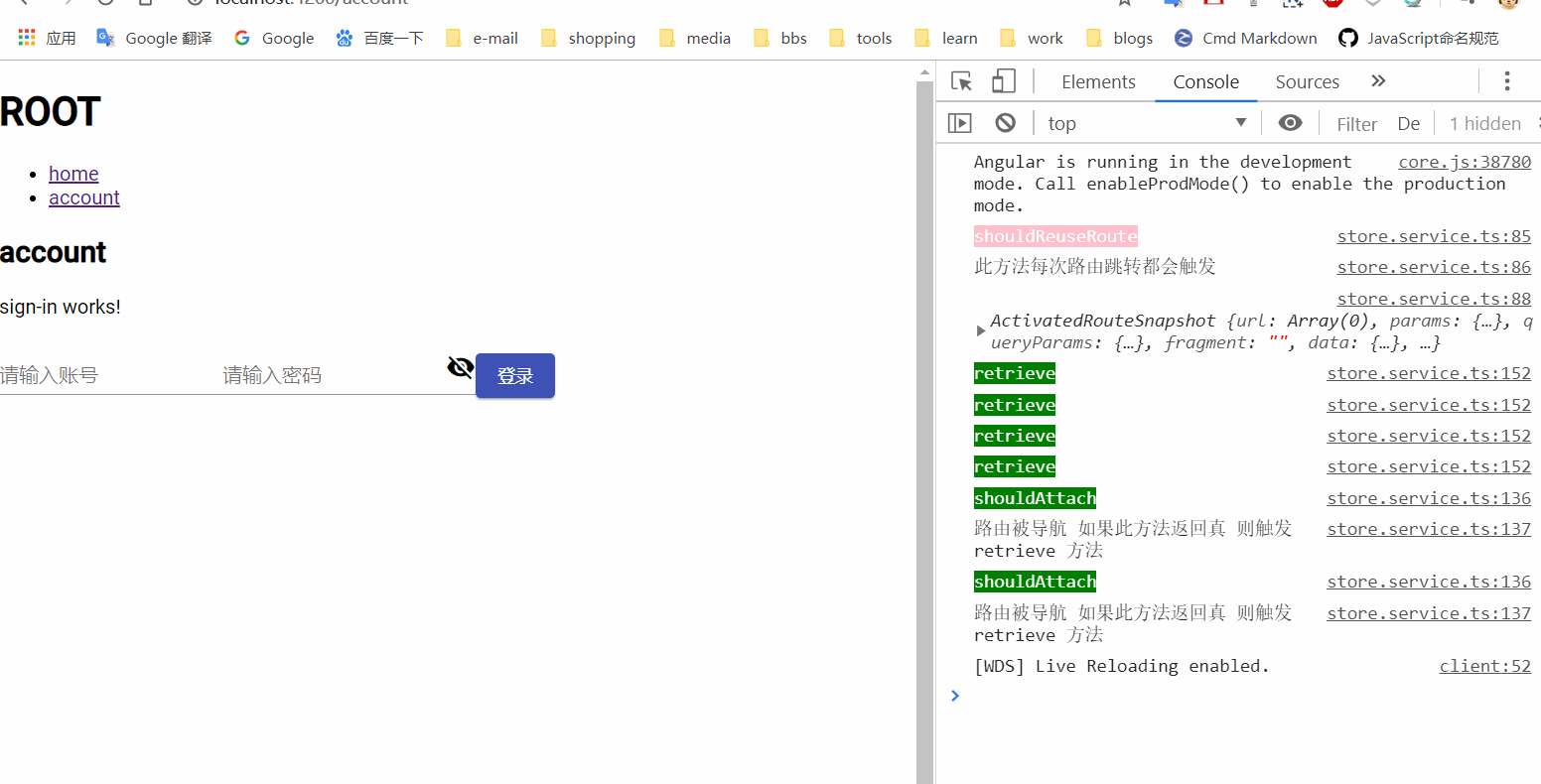使用 Angular RouteReuseStrategy 缓存组件
Cache components with Angular RouteReuseStrategy
RouteReuseStrategy provider 允许我们控制 Angular 路由和组件生命周期的行为。
当我们在组件间切换的时候,Angular都会销毁上一个组件,并且创建一个新的组件。在大多数情况下,我们可能不想让它这样工作,因为每次加载一个组件,可能会有很多类似HTTP请求一样的昂贵的操作。
这时候就需要RouteReuseStrategy了。
RouteReuseStrategy是什么
RouteReuseStrategy接口声明了5个方法。
shouldReuseRoute
这个方法每次切换路由时都会被调用。future参数是将要离开的路由,curr参数是将要加载的路由。如果这个方法返回true,路由将不会跳转(意味着路由没有发生变化)。如果它返回false,则路由发生变化并且其余方法会被调用。
shouldReuseRoute(future: ActivatedRouteSnapshot, curr: ActivatedRouteSnapshot): boolean {
// 默认行为
return future.routeConfig === curr.routeConfig;
}shouldAttach
路由刚刚被打开,当我们加载到这个路由的组件上时,shouldAttach会被调用。一旦组件被加载这个方法都会被调用。如果这个方法返回true,retrieve方法将会被调用。否则这个组件将会被重新创建。
shouldAttach(route: ActivatedRouteSnapshot): boolean;retrieve
当shouldAttach方法返回true时这个方法会被调用。提供当前路由的参数(刚打开的路由),并且返回一个缓存的RouteHandle。如果返回null表示没有效果。我们可以使用这个方法手动获取任何已被缓存的RouteHandle。框架不会自动管理它,需要我们手动实现。
retrieve(route: ActivatedRouteSnapshot): DetachedRouteHandle | null;shouldDetach
当离开当前路由时这个方法会被调用。如果返回true,store方法会被调用。
shouldDetach(route: ActivatedRouteSnapshot): boolean;store
这个方法当且仅当shouldDetach方法返回true时被调用。我们可以在这里具体实现如何缓存RouteHandle。在这个方法中缓存的内容将会被用在retrieve方法中。它提供了我们离开的路由和RouteHandle。
store(route: ActivatedRouteSnapshot, detachedTree: DetachedRouteHandle): void;示例
src/services/route-strategy.service.ts:
import { RouteReuseStrategy, DetachedRouteHandle, ActivatedRouteSnapshot } from '@angular/router';
export class RouteStrategyService implements RouteReuseStrategy {
public static handlers: { [key: string]: DetachedRouteHandle } = {};
public static deleteRouteSnapshot(path: string): void {
const name = path.replace(/\//g, '_');
if (RouteStrategyService.handlers[name]) {
delete RouteStrategyService.handlers[name];
}
}
/**
* 判断当前路由是否需要缓存
* 这个方法返回false时则路由发生变化并且其余方法会被调用
* @param {ActivatedRouteSnapshot} future
* @param {ActivatedRouteSnapshot} curr
* @returns {boolean}
* @memberof CacheRouteReuseStrategy
*/
public shouldReuseRoute(future: ActivatedRouteSnapshot, curr: ActivatedRouteSnapshot): boolean {
return future.routeConfig === curr.routeConfig
&& JSON.stringify(future.params) === JSON.stringify(curr.params);
}
/**
* 当离开当前路由时这个方法会被调用
* 如果返回 true 则 store 方法会被调用
* @param {ActivatedRouteSnapshot} route
* @returns {boolean}
* @memberof CacheRouteReuseStrategy
*/
public shouldDetach(route: ActivatedRouteSnapshot): boolean {
return true;
}
/**
* 将路由写入缓存
* 在这里具体实现如何缓存 RouteHandle
* 提供了我们离开的路由和 RouteHandle
* @param {ActivatedRouteSnapshot} route
* @param {DetachedRouteHandle} detachedTree
* @memberof CacheRouteReuseStrategy
*/
public store(route: ActivatedRouteSnapshot, detachedTree: DetachedRouteHandle): void {
RouteStrategyService.handlers[this.getPath(route)] = detachedTree;
}
/**
* 路由被导航 如果此方法返回 true 则触发 retrieve 方法
* 如果返回 false 这个组件将会被重新创建
* @param {ActivatedRouteSnapshot} route
* @returns {boolean}
* @memberof CacheRouteReuseStrategy
*/
public shouldAttach(route: ActivatedRouteSnapshot): boolean {
return !!RouteStrategyService.handlers[this.getPath(route)];
}
/**
* 从缓存读取cached route
* 提供当前路由的参数(刚打开的路由),并且返回一个缓存的 RouteHandle
* 可以使用这个方法手动获取任何已被缓存的 RouteHandle
* @param {ActivatedRouteSnapshot} route
* @returns {(DetachedRouteHandle | null)}
* @memberof CacheRouteReuseStrategy
*/
public retrieve(route: ActivatedRouteSnapshot): DetachedRouteHandle | null {
return RouteStrategyService.handlers[this.getPath(route)] || null;
}
private getPath(route: ActivatedRouteSnapshot): string {
// tslint:disable-next-line: no-string-literal
const path = route['_routerState'].url.replace(/\//g, '_');
return path;
}
}src/app/app.module.ts:
import { RouteReuseStrategy } from '@angular/router';
import { RouteStrategyService } from '../services/route-strategy.service';
@NgModule({
...
providers: [
...
{ provide: RouteReuseStrategy, useClass: RouteStrategyService }
],
bootstrap: [AppComponent]
})
export class AppModule { }以上示例运行时会缓存所有路由组件。
实现比如标签页效果时,关闭标签页,调用RouteStrategyService中的deleteRouteSnapshot方法删除已缓存的页面即可。
这里可能会有个问题,如果你不想用这个路由缓存了,请务必删除掉app.module.ts中的providers,而不是将RouteStrategyService的shouldReuseRoute始终return true;这样会出现路由跳转页面不跳转的问题,原因暂时未知。
以下是运行效果图:

The end...
Last updated by Jehorn, 11/1/2019